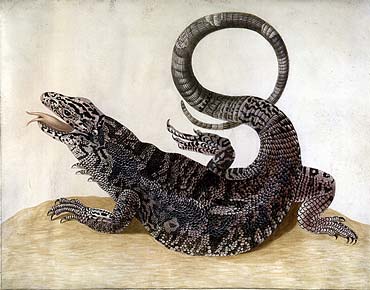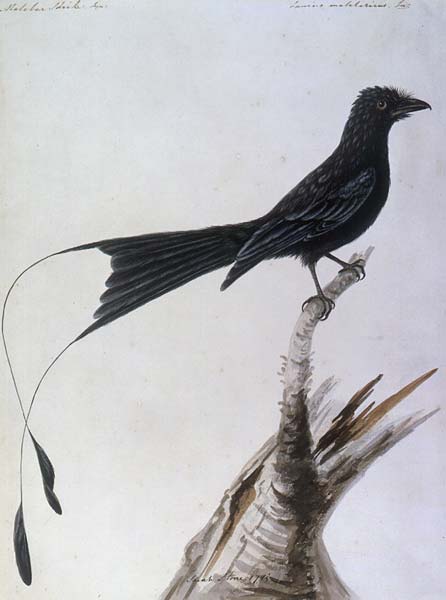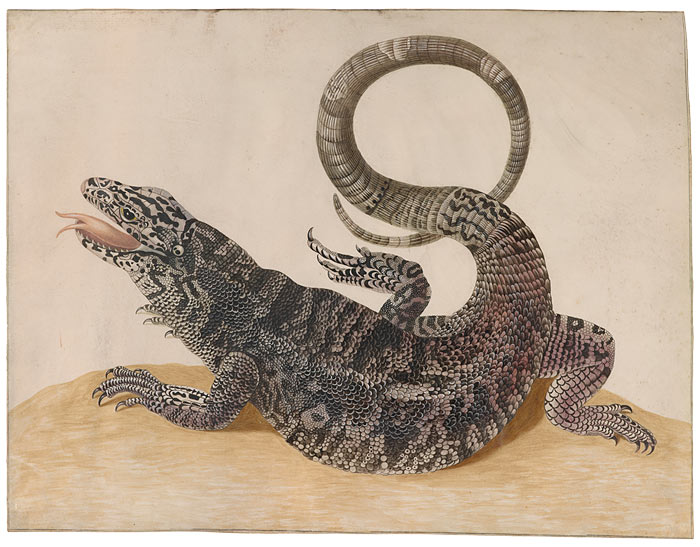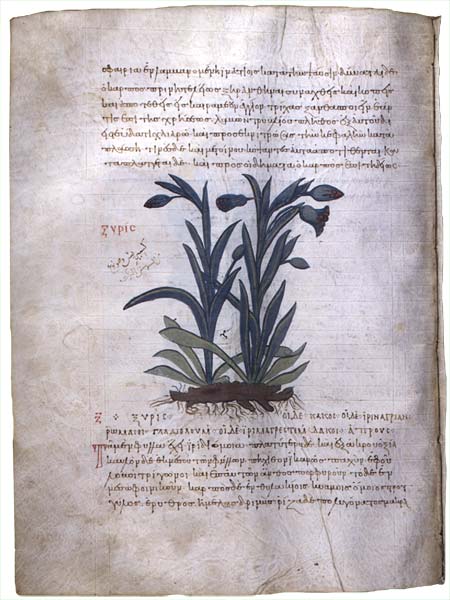
Picturing Natural History: Flora and Fauna in Drawings, Manuscripts, and Printed Books was The Morgan Library & Museum's first exhibition devoted to natural history illustration. It was also the Morgan's last before closing to the public for an extensive renovation and expansion program. The institution reopened to the public in spring 2006.
Natural history illustration commonly refers to images of plants and animals created by an artist for documentation and study. This exhibition traced the significant changes in the style, iconography, and purpose of illustrating nature over the course of 900 years—from the Middle Ages through the nineteenth century—in nearly one hundred drawings, manuscripts, and printed books from the Morgan's extraordinarily rich collections.
Some of the earliest natural history illustrations were made for ancient medical treatises as aids in identifying plants with medicinal properties. Because medieval artists copied existing illustrations rather than drawing from life, over time these depictions became highly stylized and barely recognizable. Picturing Natural History begun with one of the Morgan's treasures, a rare tenth-century copy of De materia medica of Dioscorides, written in the first century A.D. and the most popular book of remedies during the Middle Ages.
Artists first attempted the naturalistic depiction of flora and fauna in manuscripts of sacred texts, where their presence signified God's beneficence. On view was a masterpiece of the early Renaissance, the Book of Hours painted for Catherine of Cleves around 1440, with extraordinary representations of a variety of natural-history subjects.
Drawing from nature became a necessity for the illustrators of early printed herbals in the sixteenth century as plants unknown to classical authors were brought to Europe from newly explored areas of the world. The exhibition presented several examples of the Morgan's renowned collection of such works, including a hand-colored copy of Leonhart Fuchs's De historia stirpium of 1542, one of the first books with illustrations drawn from life.
Depictions of flora and fauna became increasingly systematic in the seventeenth and eighteenth centuries as artist-explorers sought to understand the workings of their subjects more fully. The exhibition presents a selection of works by some of the period's most important artists, including Maria Sibylla Merian, the pioneering Dutch woman who traveled to South America in 1699 in search of specimens, and Mark Catesby, the British artist-naturalist and author of the most significant work of natural history in eighteenth-century America.
During the late eighteenth and early nineteenth centuries, advances in printing methods allowed for greater accuracy in the delineation of plant and animal subjects. Two of the most important artists of the period, Pierre-Joseph Redouté, the most celebrated of all flower painters, and John James Audubon, America's preeminent artist-naturalist, were represented.
Picturing Natural History: Flora and Fauna in Drawings, Manuscripts, and Printed Books is sponsored by The Fay Elliott Foundation. Generous assistance is provided by The H. P. Kraus Fund, Con Edison, and MetLife Foundation.
Maria Sibylla Merian (Dutch, 1647–1717)
Surinam Lizard
Pen and black ink and watercolor and gouache, on vellum
13 x 17 in. (329 x 430 mm)
Purchased on the Sunny Crawford von Bülow Fund 1978, 2001.10





